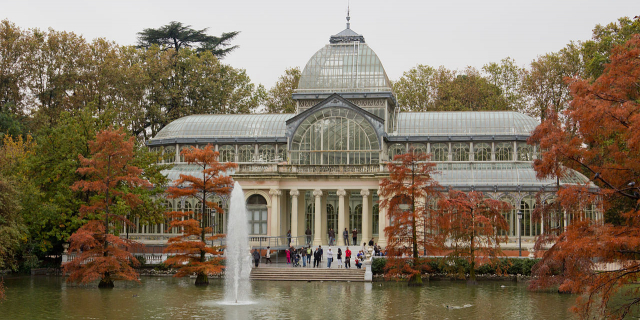Valencian Art Nouveau
Context of Valencian Art Nouveau
Valencian Art Nouveau (Spanish: modernismo valenciano, Valencian: modernisme valencià) is the historiographic denomination given to an art and literature movement associated with the Art Nouveau in the Valencian Community, in Spain.
Its main form of expression was in architecture, but many other arts were involved (painting, sculpture, etc.), and especially the design and the decorative arts (cabinetmaking, carpentry, forged iron, ceramic tiles, ceramics, etc.), which were particularly important, especially in their role as support to architecture.
Although Art Nouveau was part of a general trend that emerged in Europe around the turn of the 20th century, in the Valencian Community the trend acquired its own unique personality in the context of spectacular urban and industrial development. It is equivalent to a number of other fin de siècle art movements going by the names of Art Nouveau i...Read more
Valencian Art Nouveau (Spanish: modernismo valenciano, Valencian: modernisme valencià) is the historiographic denomination given to an art and literature movement associated with the Art Nouveau in the Valencian Community, in Spain.
Its main form of expression was in architecture, but many other arts were involved (painting, sculpture, etc.), and especially the design and the decorative arts (cabinetmaking, carpentry, forged iron, ceramic tiles, ceramics, etc.), which were particularly important, especially in their role as support to architecture.
Although Art Nouveau was part of a general trend that emerged in Europe around the turn of the 20th century, in the Valencian Community the trend acquired its own unique personality in the context of spectacular urban and industrial development. It is equivalent to a number of other fin de siècle art movements going by the names of Art Nouveau in France and Belgium, Jugendstil in Germany, Sezession in Austria-Hungary, Liberty style in Italy and Modern or Glasgow Style in Scotland.
The Valencian Art Nouveau was active from roughly 1899 (Art Nouveau reform of the Glorieta Park in Alcoy) to 1917. The Art Nouveau movement in the Valencian Community is best known for its architectural expression, especially in the works of the architects Demetrio Ribes Marco and Francisco Mora Berenguer in Valencia or Vicente Pascual Pastor and Timoteo Briet Montaud in Alcoy, but was also significant in sculpture and painting. Notable painters include Fernando Cabrera Cantó, Francisco Laporta Valor, Emilio Sala, Adolfo Morrió and Edmundo Jordá. A notable sculptor was Lorenzo Ridaura Gosálbez.
On the other hand, there are several Valencian populations who form part of the Art Nouveau European Route, an association of local governments and non-governmental institutions for the international promotion and protection of Art Nouveau heritage. It is the case of Alcoy, Novelda and Sueca.


























